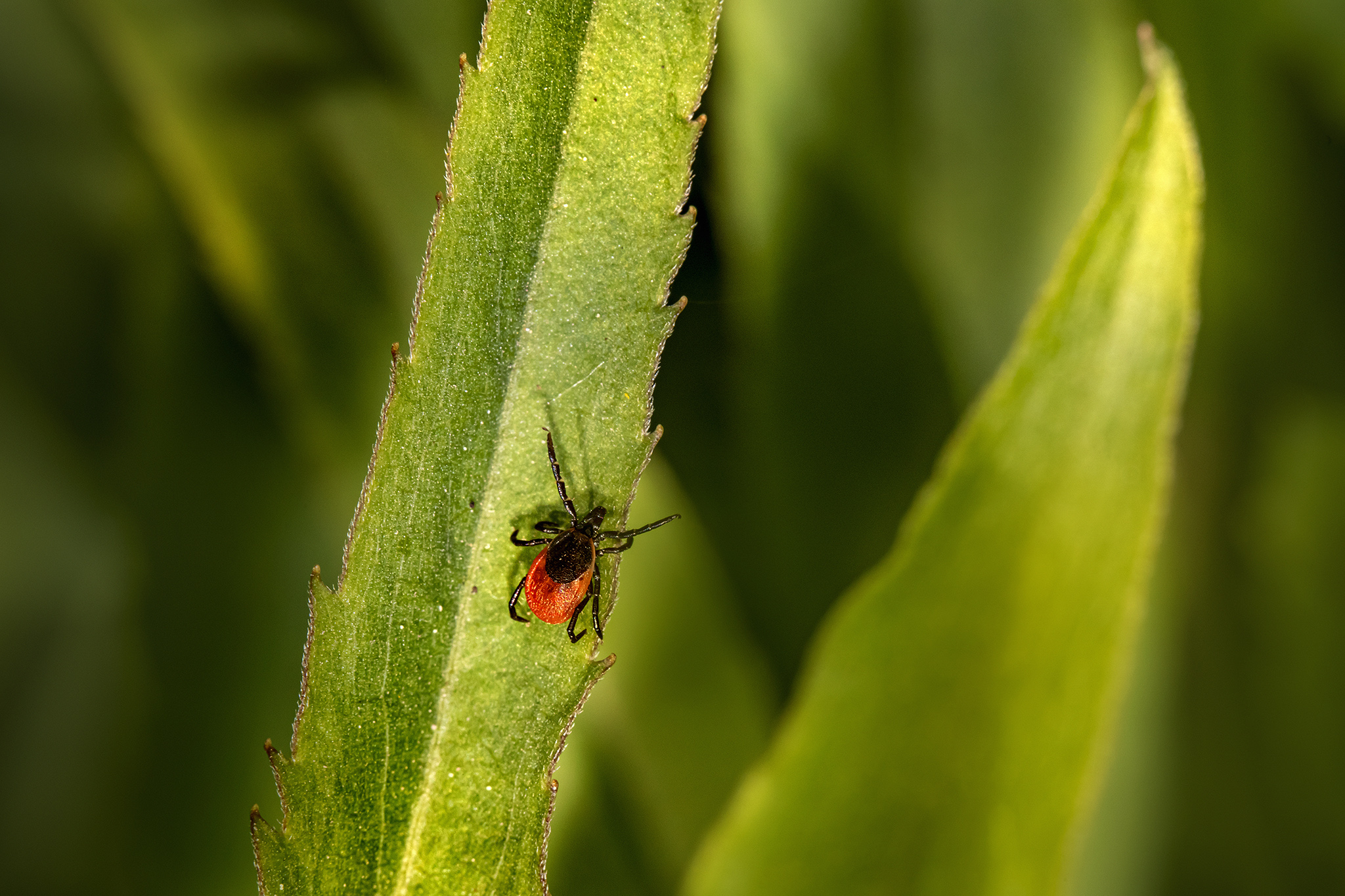Castor Bean Tick (Ixodes ricinus)
The Castor Bean Tick (Ixodes ricinus), also known as the sheep tick or wood tick, is a parasitic arachnid found in Europe and parts of Asia and North Africa. This species is a significant vector of diseases affecting humans, livestock, and wildlife. It is primarily associated with forests, grasslands, and areas frequented by animals.
Physical Description
- Size:
- Unfed adults: 2–4 mm (0.08–0.16 inches) in length.
- Engorged females (after feeding): Up to 11 mm (0.43 inches).
- Coloration:
- Unfed: Brownish-red body with darker legs and mouthparts.
- Engorged: Grayish-blue or olive when distended with blood.
- Shape:
- Flattened oval body when unfed; rounded and swollen when engorged.
- Legs:
- Eight legs, typical of arachnids, equipped with claws for gripping hosts.
Life Cycle
The Castor Bean Tick has a three-host life cycle, taking blood meals at each stage. The entire life cycle spans 2–4 years, depending on environmental conditions.
- Eggs:
- Females lay up to 2,000 eggs in leaf litter after their final blood meal.
- Eggs hatch into larvae after several weeks.
- Larvae:
- Six-legged and tiny (~0.5 mm).
- Feed on small mammals or birds. After feeding, they drop off the host and molt into nymphs.
- Nymphs:
- Eight-legged and slightly larger (~1.5 mm).
- Feed on small to medium-sized hosts, including rodents and reptiles.
- After feeding, they molt into adults.
- Adults:
- Feed on larger mammals, including deer, livestock, and humans.
- Males feed minimally, focusing on mating, while females take large blood meals to prepare for egg-laying.
Feeding Behavior
- Hosts:
- Prefers mammals (deer, dogs, and humans), birds, and reptiles.
- Attracted by carbon dioxide, heat, and vibrations.
- Attachment:
- Uses its mouthparts (hypostome) to anchor into the host’s skin.
- Saliva contains anticoagulants and anesthetics to ensure smooth feeding.
- Duration:
- Feeding lasts several days, during which the tick may transmit pathogens.
Habitat
- Found in temperate regions across Europe, Asia, and North Africa.
- Prefers humid environments such as:
- Woodlands and forests with dense vegetation.
- Grasslands and pastures frequented by animals.
- Urban parks and gardens with suitable hosts.
Diseases Transmitted
The Castor Bean Tick is a vector for several zoonotic diseases, including:
- Lyme Disease (Borrelia burgdorferi):
- A bacterial infection causing fatigue, joint pain, and neurological symptoms if untreated.
- Tick-Borne Encephalitis (TBE):
- A viral disease affecting the central nervous system.
- Babesiosis:
- A protozoan infection affecting red blood cells.
- Anaplasmosis:
- A bacterial disease causing fever, muscle pain, and malaise.
Behavior and Seasonal Activity
- Seasonality:
- Most active in spring and autumn when temperatures are mild and humidity is high.
- Less active during hot, dry summers and cold winters.
- Questing:
- Ticks climb vegetation and extend their forelegs to latch onto passing hosts.
Prevention and Control
- Personal Protection:
- Wear long sleeves and tuck trousers into socks in tick-prone areas.
- Use insect repellents containing DEET or permethrin.
- Perform thorough tick checks after outdoor activities.
- Pet Care:
- Regularly inspect pets for ticks and use tick-preventive treatments.
- Habitat Management:
- Clear leaf litter and tall grasses near homes to reduce tick habitats.
- Removal:
- Remove attached ticks promptly using fine-tipped tweezers. Avoid crushing the tick to reduce the risk of disease transmission.
Conservation Status
- Not Threatened:
- Widespread and abundant across its range.
- Populations are supported by the presence of suitable hosts and habitats.
Interesting Facts
- Long Survival:
- Can survive for months or even years without feeding, relying on stored energy.
- Complex Saliva:
- Contains over 1,000 proteins that help evade host immune responses and facilitate feeding.
- Global Relevance:
- Related species in other regions serve similar ecological and medical roles.
Summary
The Castor Bean Tick (Ixodes ricinus) is a small but ecologically significant arachnid. Its role as a disease vector makes it a public health concern, but it also contributes to the balance of natural ecosystems. By understanding its behavior and taking precautions, we can minimize risks while appreciating its place in nature.
Views: 396
Subscribe to the newsletter:
